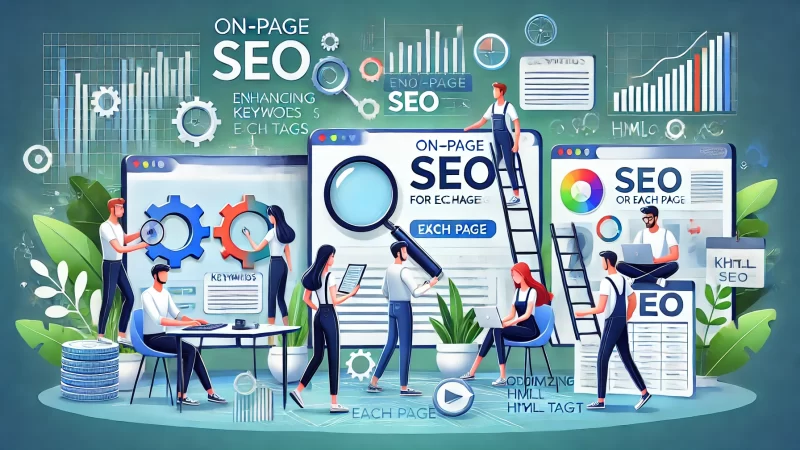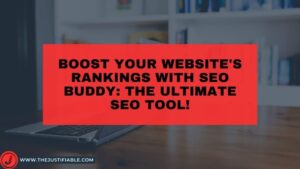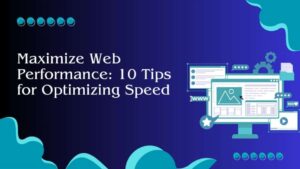Table of Contents
Are you struggling to rank higher on search engines and wondering how to SEO optimize your website effectively?
From keyword research to technical fixes, this guide answers all your questions with actionable steps to boost your website’s performance. Discover pro-level SEO optimization techniques to skyrocket your online visibility and traffic.
Mastering Keyword Research For Better Rankings
Keyword research is the foundation of any successful SEO strategy. By understanding what your audience is searching for, you can craft content that addresses their needs and ranks higher on search engines. Let’s dive deeper into effective techniques.
Choosing The Right Keywords For SEO Optimization
Selecting the right keywords is a critical step in optimizing your website. I suggest starting with keywords that align closely with your target audience’s search intent. For example, if your site focuses on fitness, terms like “best workout plans” or “home exercises” might work well.
Consider the balance between high search volume and manageable competition. High-volume keywords drive traffic, but they may be highly competitive. Using a mix of broad and specific keywords, known as short-tail and long-tail, ensures better results.
I also recommend analyzing your competitors’ keywords. Tools like Ahrefs or SEMrush can provide insights into what works for others in your niche. Use this data to refine your own strategy and focus on gaps they might have missed.
Don’t forget the user experience. A keyword that sounds natural and fits organically into your content resonates more effectively with readers and search engines.
Using Keyword Tools To Find High-Value Phrases
Keyword tools are your best friends when it comes to discovering valuable phrases. I often turn to trusted platforms like Google Keyword Planner, Ubersuggest, and Moz Keyword Explorer to identify terms that offer the most potential.
These tools provide data such as search volume, competition level, and cost-per-click (CPC). Such metrics help you prioritize which keywords to target first. For instance, a keyword with moderate search volume but low competition is often a hidden gem.
Don’t hesitate to experiment with keyword variations. If “SEO tips” is saturated, consider alternatives like “SEO strategies for beginners” or “how to SEO optimize your website.” These can help you target a niche audience.
Once you’ve found potential keywords, categorize them based on intent—informational, navigational, or transactional. This helps tailor content to specific user needs, ensuring higher engagement and conversions.
Long-Tail Keywords: Why They Matter For SEO Success
Long-tail keywords are specific phrases that often have lower search volumes but higher conversion rates. I believe these are invaluable for niche markets or new websites looking to gain traction.
For instance, instead of targeting “shoes,” try “best running shoes for beginners.” Such phrases connect with a more defined audience ready to act on their search. They also face less competition, making it easier to rank.
I advise integrating long-tail keywords naturally within your content. They are especially effective in headings, FAQs, and blog subtopics where detailed answers are needed.
One way to identify long-tail keywords is through autocomplete suggestions on search engines. Type in your primary keyword and see what additional phrases appear—these are often popular among users.
Avoiding Keyword Stuffing And Maintaining Quality
While keywords are essential, overusing them can harm your rankings. Keyword stuffing makes content feel robotic, and search engines penalize such tactics. I recommend using keywords only where they fit naturally.
Focus on writing for your audience first. Search engines aim to deliver valuable, user-friendly content, so prioritize quality. When you optimize naturally, keywords will integrate seamlessly into the text.
Instead of repeating the same keyword, use synonyms and related terms. For example, if your keyword is “SEO optimization,” you could also use “website optimization” or “search engine strategies.” This not only prevents overuse but enhances readability.
To maintain balance, I suggest reviewing your content with tools like Yoast SEO or Rank Math. They flag potential issues like keyword density and offer guidance on improvements.
Building A User-Friendly Website Structure

A well-organized website structure is essential for both users and search engines. When your site is easy to navigate, visitors stay longer, and search engines index your pages more effectively. Here’s how to get it right.
Importance Of Logical Navigation For SEO
Logical navigation creates a seamless experience for users. I recommend designing a menu that’s clear and intuitive, with categories and subcategories that guide visitors to their destination effortlessly.
For example, an e-commerce site might group products into categories like “Men’s Clothing” and “Women’s Clothing,” with subcategories for “Shoes,” “Accessories,” and more. This not only helps users but also improves your SEO by creating well-defined paths for crawlers.
Avoid burying essential pages deep within your site. A general rule I follow is ensuring that every page is reachable within three clicks from the homepage. This reduces bounce rates and increases page views.
Structuring Your Website For Better Search Engine Crawling
A well-structured site ensures search engines can crawl and index your content efficiently. Start with a sitemap, which acts as a blueprint for your website. Tools like XML Sitemap Generator make this process easy.
Organize your site using a hierarchy. Your homepage should link to main categories, which then branch into specific subcategories. I’ve found this makes it easier for search engines to understand the relationship between pages.
Ensure your URLs are clean and descriptive. For instance, “example.com/services” is more effective than “example.com/page1234.” Use your focus keyword where possible, but keep it concise and relevant.
Internal Linking Strategies To Improve Page Authority
Internal links connect different pages on your website, helping distribute authority and guiding users to related content. I suggest adding links to at least 2–3 other pages within each blog post or web page.
For example, if you’re writing about “how to SEO optimize your website,” link to related posts like “SEO-friendly content tips” or “best tools for SEO analysis.” This keeps readers engaged and signals relevance to search engines.
Use anchor text wisely. Instead of generic phrases like “click here,” use descriptive text like “learn more about SEO tools” to make your links meaningful.
Using Breadcrumbs For Enhanced User Experience
Breadcrumbs are navigational aids that show users their location on your site. For instance, on an e-commerce site, breadcrumbs might display: Home > Women’s Clothing > Dresses.
I recommend using breadcrumbs to simplify navigation, especially on content-heavy websites. They improve usability and encourage visitors to explore related pages.
Search engines also love breadcrumbs because they provide context about your site’s structure. Enabling them through plugins or manual coding is a worthwhile investment for both SEO and user satisfaction.
Writing Compelling SEO-Friendly Content
Creating content that resonates with your audience while meeting SEO requirements is crucial for driving traffic and engagement. Let’s explore actionable strategies for crafting content that both readers and search engines will appreciate.
Crafting Engaging Headlines To Capture Attention
A compelling headline is the first step to drawing readers in. I suggest focusing on clarity, curiosity, and emotion. For example, instead of “SEO Tips,” try “10 Proven SEO Tips To Boost Your Traffic.” This sparks interest and sets expectations.
Use power words like “Proven,” “Ultimate,” or “Guaranteed” to make headlines stand out. Including numbers is another great tactic, as lists are easy to digest and promise clear takeaways. Don’t forget to incorporate your focus keyword naturally to improve visibility.
When brainstorming headlines, keep your target audience in mind. Ask yourself: What problem are they trying to solve? A headline addressing their specific needs is far more likely to grab attention and drive clicks.
Lastly, test different headlines over time. Platforms like A/B testing tools can help determine which phrasing resonates most with your readers, ensuring continuous improvement in engagement rates.
Optimizing Content Length For SEO Success
The ideal content length depends on your topic and audience, but I believe detailed, high-quality content often outperforms shorter pieces. Aim for 1,000 to 2,500 words for in-depth topics, as this provides ample opportunity to cover all angles.
Balance is key. Long content is valuable only if it remains engaging throughout. Break up large sections with subheadings, lists, and visuals to keep readers interested and reduce overwhelm.
Avoid fluff. Each paragraph should provide meaningful insights or actionable tips. For instance, if discussing keyword optimization, explain why it matters and how to do it effectively.
I recommend checking your competitors’ content length for similar topics. This can give you a benchmark while allowing you to add unique value to stand out in search results.
Incorporating Keywords Naturally In Your Content
Using keywords strategically without overdoing it is a fine art. I suggest placing your primary keyword in key locations: the introduction, headings, and a few times in the body text. Let it flow naturally into sentences.
For example, instead of forcing “how to SEO optimize your website” repeatedly, write something like, “Learning how to SEO optimize your website ensures it ranks well on search engines.” This approach maintains readability while enhancing SEO.
I also recommend spacing out keyword usage. Tools like Squirrly can help monitor keyword density and flag excessive use. Remember, quality content always takes precedence over keyword stuffing.
Focus on relevance. Every time you use a keyword, it should genuinely contribute to the topic rather than feel inserted for optimization purposes. This keeps readers engaged and builds trust.
Utilizing LSI Keywords For Broader Visibility
Latent Semantic Indexing (LSI) keywords are related terms that add context to your content. For example, if your primary keyword is “SEO optimize,” LSI terms might include “search engine ranking” or “keyword research.” These broaden your reach while keeping content relevant.
I advise using LSI keywords in headings, subheadings, and naturally within paragraphs. This improves search engines’ understanding of your content, making it more likely to rank for a variety of related queries.
To find LSI keywords, use tools like LSIGraph or explore Google’s “Searches related to” section at the bottom of search results. This gives you ideas for variations that align with user intent.
Incorporating LSI keywords also makes your content more engaging. They allow you to explore different facets of a topic, answering more questions and meeting diverse audience needs.
Enhancing On-Page SEO For Each Page

On-page SEO focuses on optimizing individual pages to improve their search engine ranking. Paying attention to details like titles, meta descriptions, and images can significantly impact your site’s visibility and user experience.
Title Tags: How To Create Optimized Page Titles
Title tags are one of the most critical on-page SEO elements. I recommend crafting titles that include your primary keyword and convey the page’s value, such as “How To SEO Optimize Your Website For Success.”
Limit your title tag to 60 characters for better display in search results. Be descriptive yet concise, ensuring readers know what to expect when they click. Adding numbers or brackets, like “(Step-By-Step Guide),” can further enhance appeal.
Always make sure your title matches the content. Misleading titles may attract clicks initially but harm engagement and rankings if visitors bounce quickly. Stay honest and relevant to build trust.
Writing Meta Descriptions That Boost Click-Through Rates
Meta descriptions provide a brief summary of your page’s content, appearing below the title in search results. I suggest writing descriptions that are both informative and enticing, using your primary keyword naturally.
For example, “Learn how to SEO optimize your website with practical tips to improve rankings, boost traffic, and enhance user experience.” This is clear, actionable, and aligned with user intent.
Keep meta descriptions under 155 characters to avoid truncation. Aim to spark curiosity or solve a problem to encourage clicks. Action-oriented phrases like “Discover,” “Learn,” or “Boost” often work well.
Using Header Tags To Structure Content Properly
Header tags (H1, H2, H3, etc.) not only organize your content but also signal its hierarchy to search engines. I recommend using your primary keyword in the H1 and incorporating related terms in subheadings to maximize relevance.
Headers should break content into digestible sections. For instance, under “How To SEO Optimize Your Website,” subheadings like “Keyword Research Strategies” or “On-Page Optimization Tips” guide readers and improve readability.
Use H2 tags for main sections and H3 or H4 for supporting details. Consistent structure ensures both readers and search engines understand your content’s flow.
Optimizing Images And Alt Text For Better Search Rankings
Images enhance content visually, but they also contribute to SEO when optimized correctly. I advise compressing images to improve load times and adding descriptive file names that include keywords.
Alt text is essential for accessibility and SEO. Write clear descriptions that include relevant keywords. For instance, “Screenshot of how to SEO optimize your website using keyword tools” is both descriptive and optimized.
Ensure images are responsive and appear well across devices. Large or poorly formatted images can frustrate users, affecting engagement and rankings.
Leveraging Technical SEO For Performance
Technical SEO ensures your website is accessible, fast, and optimized for search engines. These foundational improvements enhance user experience and help your site rank better. Let’s explore key aspects of optimizing your website’s technical performance.
Optimizing Website Speed To Reduce Bounce Rates
A fast-loading website keeps visitors engaged and reduces bounce rates. I recommend using tools like Google PageSpeed Insights to identify areas for improvement, such as large images, slow scripts, or unoptimized code.
Compressing images can dramatically improve load times without sacrificing quality. Choose formats like WebP or JPEG and reduce file sizes before uploading them to your site. Tools like TinyPNG are great for this.
Enable browser caching so returning visitors experience faster loading pages. This stores parts of your website on their device, reducing the time needed to load content. I find it especially useful for e-commerce sites.
Consider investing in a Content Delivery Network (CDN). CDNs distribute your website across multiple servers worldwide, ensuring users experience fast load times regardless of location.
Ensuring Mobile-Friendliness With Responsive Design
A mobile-friendly website is essential since most users browse from their phones. I suggest testing your site with Google’s Mobile-Friendly Test to ensure it performs well on smaller screens.
Responsive design adjusts your website’s layout to fit various devices. Whether users are on a smartphone, tablet, or desktop, the experience should remain seamless. Focus on touch-friendly buttons, readable fonts, and intuitive navigation.
Minimize pop-ups on mobile devices. Intrusive elements can frustrate users and hurt rankings. Instead, use smaller banners or delay pop-ups until visitors have interacted with your page.
If possible, use Accelerated Mobile Pages (AMP). This framework strips unnecessary elements to create fast-loading, mobile-optimized versions of your pages. While not mandatory, it’s a great option for blogs and news sites.
Fixing Broken Links And Redirect Errors Effectively
Broken links frustrate users and harm your SEO. I recommend scanning your site regularly with tools like Screaming Frog or Serpstat to identify and fix any 404 errors or redirect issues.
Replace broken links with updated URLs or relevant content. If the original resource is unavailable, link to a similar page that still provides value to your audience.
Set up 301 redirects for outdated pages. This ensures users and search engines are directed to the correct, updated version of your content without losing traffic or authority.
Keep your sitemap updated whenever you add or remove pages. Submitting the latest version to Google Search Console helps search engines crawl your site efficiently.
Using Schema Markup To Improve Search Appearance
Schema markup adds structured data to your website, enhancing its visibility in search results. I believe this is a game-changer for showcasing rich snippets like reviews, FAQs, or events.
Start with tools like Google’s Structured Data Markup Helper to generate schema code. Apply it to pages where additional information could boost engagement, such as product pages or blogs.
Rich snippets make your results stand out, increasing click-through rates. For instance, adding review schema can display star ratings beneath your search listing, enticing more users to click.
Don’t forget to validate your schema markup using Google’s Rich Results Test. This ensures it’s implemented correctly and eligible for enhanced search features.
Building High-Quality Backlinks For Authority

Backlinks remain one of the strongest ranking factors in SEO. A diverse, high-quality backlink profile signals trust and authority to search engines. Let’s discuss how to secure impactful links for your site.
Understanding The Importance Of Link Building
Backlinks act as endorsements for your website, signaling credibility to search engines. I recommend prioritizing links from authoritative sites within your niche, as these carry more weight.
Think of backlinks as votes of confidence. The more relevant and high-quality links you acquire, the more likely search engines will consider your content valuable and rank it higher.
Avoid black-hat tactics like buying links. These can result in penalties, damaging your rankings. Focus on ethical strategies that build genuine connections and long-term results.
Identifying Authoritative Sites For Backlink Opportunities
To build quality backlinks, target authoritative sites in your niche. I advise using tools like Moz or Ahrefs to analyze domain authority and identify potential partners.
Create content that attracts natural links, such as in-depth guides, research studies, or unique insights. High-value content is more likely to be shared by industry leaders.
Engage with potential linking sites through email outreach. Personalize your message and highlight how your content aligns with their audience’s interests. A genuine connection increases your chances of success.
Look for broken links on authoritative websites and offer your content as a replacement. This not only helps them but also secures you a valuable backlink.
Guest Blogging Strategies To Build Relationships And Links
Guest blogging allows you to contribute content to authoritative sites while earning backlinks. I recommend focusing on blogs within your niche that have an engaged audience.
When pitching a guest post, ensure your topic aligns with their readers’ interests. Propose unique ideas that haven’t been covered extensively, showing your expertise in the subject.
Include one or two natural backlinks to your site within the post. For example, link to a detailed guide or relevant resource that adds value to their readers.
Building relationships with bloggers and influencers is just as important as the backlinks themselves. A good rapport can lead to future collaborations and more opportunities to grow your authority.
Monitoring And Disavowing Harmful Links Regularly
Not all backlinks are beneficial. Low-quality or spammy links can harm your rankings. I suggest monitoring your backlink profile with tools like SEMrush or Google Search Console.
Identify harmful links and use Google’s Disavow Tool to prevent them from affecting your SEO. This step ensures search engines ignore these links when evaluating your site.
Stay proactive by auditing your backlinks periodically. A clean profile strengthens your overall authority and protects your site from potential penalties.
Utilizing Analytics To Track SEO Progress
Analytics is essential for measuring the success of your SEO efforts. By tracking key metrics, you can refine strategies and achieve better results. Let’s explore how to use analytics effectively.
Setting Up Google Analytics And Search Console
Google Analytics and Search Console are indispensable tools for monitoring SEO performance. I recommend setting up both to gain insights into traffic sources, user behavior, and keyword rankings.
Google Analytics provides detailed reports on visitor demographics, popular pages, and time spent on your site. This helps you identify what’s working and where improvements are needed.
Search Console highlights technical issues, such as indexing errors or crawl problems. Fixing these promptly ensures your site remains optimized and accessible to search engines.
Measuring Key Metrics For Website Performance
Key metrics like organic traffic, bounce rates, and conversion rates reveal how well your SEO efforts are paying off. I suggest focusing on these to gauge the effectiveness of your strategies.
For example, a high bounce rate may indicate issues with site speed or content relevance. Addressing these factors can improve engagement and rankings over time.
Track keyword rankings to ensure your site is improving for target terms. If rankings plateau, it may be time to revisit your content or build additional backlinks.
Identifying Content That Drives The Most Traffic
Use analytics to pinpoint high-performing content on your site. I find that analyzing these pages helps you replicate their success in future posts.
Look for patterns in topics, formats, or keywords that attract the most visitors. For instance, if “how to SEO optimize your website” performs well, consider creating similar guides or expanding on related topics.
Identify underperforming content and update it with fresh information or additional insights. This can breathe new life into old posts and boost their visibility.
Adjusting Strategies Based On Analytical Insights
SEO is an ongoing process that requires regular adjustments. I recommend reviewing your analytics data monthly to identify trends and refine your approach.
For example, if organic traffic drops, investigate potential causes like algorithm updates, technical issues, or competitor actions. Quick responses keep your site competitive.
Use insights from analytics to experiment with new strategies, such as targeting different keywords or exploring emerging trends. Continuous improvement ensures long-term growth.
Staying Updated With SEO Trends And Algorithm Changes

SEO is an ever-evolving field, with search engines frequently updating algorithms. Staying informed ensures you can adapt strategies and maintain your site’s rankings. Let’s explore how to keep pace with these changes effectively.
Monitoring Core Updates To Protect Your Rankings
Core updates from search engines like Google can significantly impact your rankings. I suggest keeping an eye on official announcements or industry blogs like Search Engine Journal to stay informed about upcoming changes.
When a core update is released, assess its impact on your site. Use tools like Google Analytics to track fluctuations in traffic and identify pages affected. This helps you pinpoint where adjustments may be needed.
Focus on improving content quality and relevance, as core updates often prioritize user-centric factors. For example, refining outdated information or adding more depth to your posts can align your content with search engines’ expectations.
Adopting a proactive approach to monitoring updates ensures you remain ahead of competitors who might be slower to adapt. Regularly revisiting your SEO strategies is key to long-term success.
Adopting AI Tools For Smarter Optimization
AI tools are revolutionizing SEO by offering advanced insights and automation. I believe leveraging tools like ChatGPT for content ideation or Jasper for creating meta descriptions can save time and improve efficiency.
AI-powered platforms like Clearscope or SurferSEO analyze top-ranking content for your target keywords, offering recommendations to enhance your pages. These tools guide you in creating more competitive and optimized content.
Personalized chatbots can improve user engagement on your site, indirectly benefiting SEO by reducing bounce rates. Tools like Drift or Intercom make it easy to implement conversational AI solutions.
Integrating AI tools into your workflow doesn’t just make optimization easier—it helps you identify trends and adapt faster, giving you a significant edge in the ever-changing SEO landscape.
Focusing On Voice Search Optimization Techniques
Voice search is transforming how users interact with search engines. I suggest optimizing for natural language queries by targeting conversational keywords, such as “What’s the best way to SEO optimize a website?”
Structured data is critical for voice search optimization. Implement schema markup to provide search engines with precise information about your content. This increases the likelihood of your site appearing in voice search results.
Ensure your site loads quickly and is mobile-friendly. Many voice searches are conducted on mobile devices, so these factors heavily influence user experience and rankings.
Providing concise, direct answers to common questions within your content helps you target voice search snippets effectively. Think of this as answering a friend’s question quickly and clearly.
Learning From Competitor Analysis For Continuous Growth
Competitor analysis is a valuable strategy for identifying trends and opportunities. I recommend using tools like SEMrush or SpyFu to analyze your competitors’ backlinks, keywords, and content strategies.
Observe what works well for their audience. Are they focusing on a specific type of content or format? This can inspire ideas for your own SEO plan while highlighting areas where you can differentiate yourself.
Identify content gaps they haven’t covered and create detailed resources to fill those voids. Being the first to address a topic can establish your site as an authority.
Regularly updating your analysis ensures you stay competitive and adapt quickly to any shifts in your industry’s SEO landscape.
Avoiding Common SEO Mistakes
Even small missteps in SEO can harm your site’s rankings. Recognizing and addressing these issues early on is essential for maintaining a strong online presence. Let’s tackle some of the most common errors.
Overlooking Technical Errors That Harm Rankings
Technical SEO issues like broken links or slow-loading pages can derail your efforts. I suggest performing regular audits using tools like Screaming Frog or Sitebulb to catch and fix these problems promptly.
Pay attention to crawl errors in Google Search Console. These indicate pages that search engines can’t access, which can prevent indexing and hurt your visibility. Resolving them is a simple yet impactful step.
Ensure proper use of canonical tags to avoid duplicate content issues. Misusing these tags can confuse search engines, leading to reduced rankings.
Neglecting Local SEO For Targeting Nearby Audiences
Local SEO is crucial for businesses looking to attract nearby customers. I recommend creating a Google Business Profile and optimizing it with accurate information, such as your address, phone number, and business hours.
Include local keywords in your content, such as “best restaurants in [city]” or “SEO services near me.” This helps you rank for location-based queries and connect with potential customers.
Encourage satisfied clients to leave reviews on platforms like Google or Yelp. Positive reviews improve your local SEO and build trust with new visitors.
Failing To Optimize URLs And Permalinks Correctly
URLs that are too long or contain random strings of characters confuse both users and search engines. I advise using short, descriptive URLs that include your focus keyword. For example, “example.com/seo-optimization-tips” is clear and effective.
Avoid frequent changes to your URLs, as this can disrupt your site’s structure and cause broken links. When updates are necessary, use 301 redirects to guide users and maintain link equity.
Ignoring The Power Of Regular Content Updates
Outdated content can hurt your rankings over time. I recommend revisiting old blog posts or pages periodically to refresh information, add new insights, and fix broken links.
Updating content also signals to search engines that your site is active and relevant. I’ve found that even small tweaks, like adding recent statistics or revising examples, can make a significant impact.
Creating A Pro-Level SEO Checklist For Your Website

A comprehensive SEO checklist ensures you stay on track and consistently improve your site’s performance. Let’s break down daily, weekly, monthly, and annual tasks to maximize your SEO results.
Daily SEO Tasks To Maintain High Rankings
Check for technical issues, such as broken links or downtime, using monitoring tools. Even minor disruptions can negatively impact user experience and rankings.
Review analytics data to track changes in traffic or behavior. Sudden drops may indicate problems that require immediate attention, such as a ranking loss or algorithm update.
Respond to user comments and feedback on your site. Engaging with your audience builds trust and keeps them coming back.
Weekly SEO Audits For Technical And Content Issues
Conduct a quick review of your site’s speed, mobile performance, and overall functionality. Small fixes can prevent larger problems from developing.
Analyze keyword performance to identify areas for improvement. If specific terms aren’t driving traffic, consider adjusting your content or targeting alternative phrases.
Update internal links to keep users engaged. Linking to recent content or popular posts enhances navigation and boosts page authority.
Monthly Strategies To Expand Your Website’s Reach
Publish at least one new piece of high-quality content each month. Fresh content attracts visitors and gives search engines more opportunities to rank your site.
Evaluate your backlink profile and reach out to new sites for guest posting or collaboration opportunities. This keeps your link-building strategy active and effective.
Test new tools or strategies, such as video content or interactive elements, to see how they impact engagement and rankings.
Annual Reviews To Keep Up With Evolving Trends
Review your entire SEO strategy annually, focusing on metrics like traffic growth, keyword rankings, and conversion rates. Use this data to refine your long-term goals.
Analyze competitors’ progress and look for new opportunities to innovate or differentiate your content. Staying ahead requires constant adaptation.
Ensure your website design, navigation, and technology are up to date. A modern, user-friendly site supports both SEO and user experience goals.






